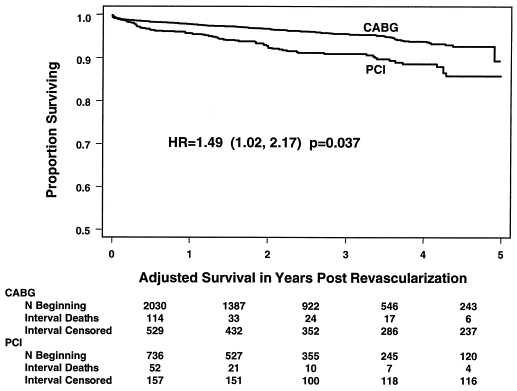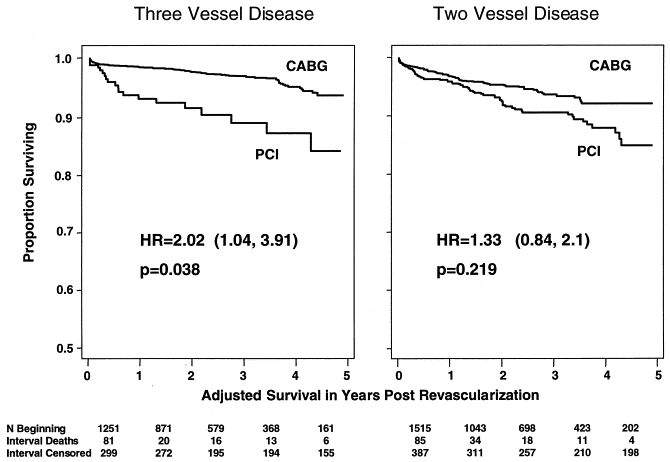… Published the results of survival of patients with diabetes and MVD after surgical or percutaneous coronary revascularization. Their results showed that in 2766 risk matched diabetics PCI increased five-year mortality by 1.5–3.9 times…
In 2,766 patients with diabetes undergoing their first coronary revascularization procedure, improved survival with CABG was the initial revascularization demonstrated. The analysis supported that bypass surgery is preferable to coronary angioplasty for the revascularization of patients with diabetes with both 2VD- and 3VD:

Five-year Kaplan-Meyer survival according to revascularization strategy after adjusting for differences in baseline characteristics: age, gender, ejection fraction, left ventricular end-diastolic pressure, procedural priority, comorbid conditions (chronic obstructive pulmonary disease requiring bronchodilator therapy, renal failure on dialysis or peripheral vascular disease) and the proportion of patients with three-vessel disease. CABG = coronary artery bypass grafting; HR = hazard ratio; PCI = percutaneous coronary intervention.

Five-year Kaplan-Meyer survival for 1,251 patients with diabetes and three-vessel disease and 1,515 with diabetes and two-vessel disease revascularized initially with CABG or PCI after adjusting for differences in baseline characteristics (age, gender, ejection fraction, left ventricular end-diastolic pressure, procedural priority and comorbid conditions: chronic obstructive pulmonary disease requiring bronchodilator therapy, renal failure on dialysis or peripheral vascular disease). CABG = coronary artery bypass grafting; HR = hazard ratio; PCI = percutaneous coronary intervention.
Ref: Survival of patients with diabetes and multi-vessel coronary artery disease after surgical or percutaneous coronary revascularisation: results of a large regional prospective study. Niles NW et al. of the Northern New England Cardiovascular Disease Study Group, J Am Coll Cardiol 2001;37:1008–1015.
